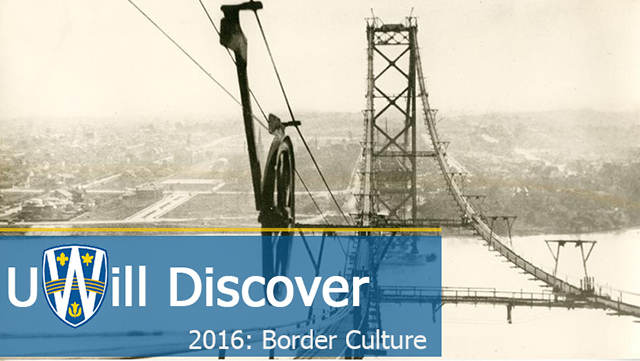
"From the Blue Line to the Colour Line: Wilfred 'Boomer' Harding and Racialized Sport in the Border Cities"
Type of Proposal
Visual Presentation (Poster, Installation, Demonstration)
Streaming Media
Faculty
Faculty of Arts, Humanities and Social Sciences
Faculty Sponsor
Dr. Miriam Wright
Proposal
We are researching the life of Wilfred “Boomer” Harding and his career in hockey during the 1940s as a framework through which we can examine the border culture shared between Windsor and Detroit and the segregational “colour line” in organized sport during the period. To understand Harding's life while playing hockey in the cross-border Auto-Sextet team, we unearthed previously unused sources such as newspaper articles, private letters, and personal mementos assembled by members of his family. While the history of organized and professional sports is an established field, we are considering how the individual life of Harding and his experiences as a trailblazer in crossing hockey’s colour line fits into the greater narrative examined by sports historians. Our presentation of this research will be unique in that we are combining traditional historical scholarship with the technological advances of the emerging field of digital history. We have created a Neatline map exhibit that is hosted in the Wilfred “Boomer” Harding Archive online. This archive contains digital scans of all of the primary documents compiled by the Harding family in an accessible format that can easily lend itself to academic research or interest into local history. Our presentation will showcase Harding’s activity in hockey through a mapping feature offered with Omeka software that allows us to create an interactive display that pinpoints important places in his life as well as segregation in hockey. At these plotting points, the user will find key primary sources categorized according to Dublin Core standards that illustrate the relevance of that location and time to our research. By focusing on the Windsor/Detroit area, our work makes a meaningful contribution to research on racial segregation in sports by highlighting the experience of an individual who faced this type of segregation firsthand.
Start Date
29-3-2016 8:30 AM
End Date
29-3-2016 9:50 AM
"From the Blue Line to the Colour Line: Wilfred 'Boomer' Harding and Racialized Sport in the Border Cities"
We are researching the life of Wilfred “Boomer” Harding and his career in hockey during the 1940s as a framework through which we can examine the border culture shared between Windsor and Detroit and the segregational “colour line” in organized sport during the period. To understand Harding's life while playing hockey in the cross-border Auto-Sextet team, we unearthed previously unused sources such as newspaper articles, private letters, and personal mementos assembled by members of his family. While the history of organized and professional sports is an established field, we are considering how the individual life of Harding and his experiences as a trailblazer in crossing hockey’s colour line fits into the greater narrative examined by sports historians. Our presentation of this research will be unique in that we are combining traditional historical scholarship with the technological advances of the emerging field of digital history. We have created a Neatline map exhibit that is hosted in the Wilfred “Boomer” Harding Archive online. This archive contains digital scans of all of the primary documents compiled by the Harding family in an accessible format that can easily lend itself to academic research or interest into local history. Our presentation will showcase Harding’s activity in hockey through a mapping feature offered with Omeka software that allows us to create an interactive display that pinpoints important places in his life as well as segregation in hockey. At these plotting points, the user will find key primary sources categorized according to Dublin Core standards that illustrate the relevance of that location and time to our research. By focusing on the Windsor/Detroit area, our work makes a meaningful contribution to research on racial segregation in sports by highlighting the experience of an individual who faced this type of segregation firsthand.
